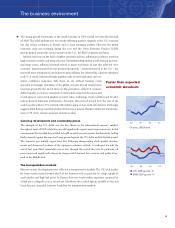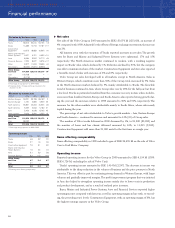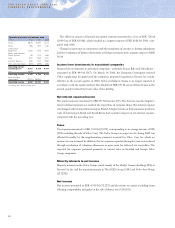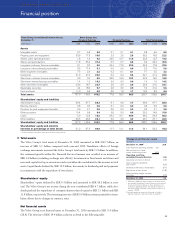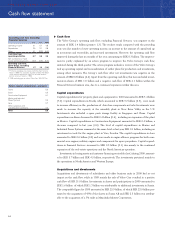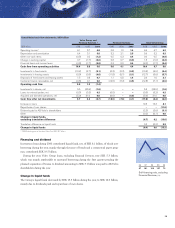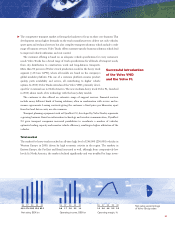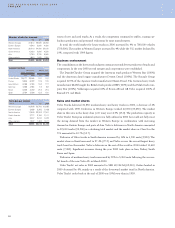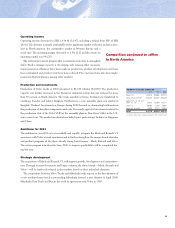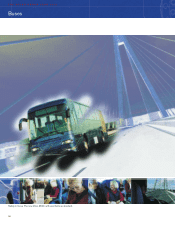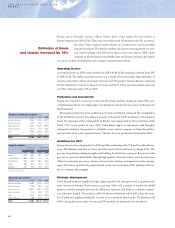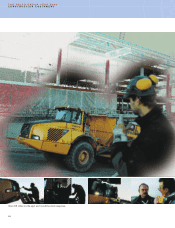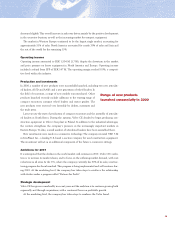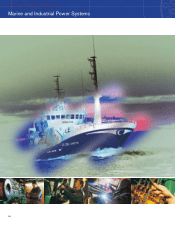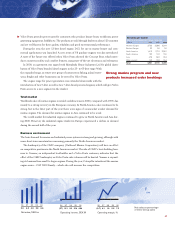Volvo 2000 Annual Report Download - page 31
Download and view the complete annual report
Please find page 31 of the 2000 Volvo annual report below. You can navigate through the pages in the report by either clicking on the pages listed below, or by using the keyword search tool below to find specific information within the annual report.
29
Operating income
Operating income decreased to SEK 1,414 M (3,247), including a refund from SPP of SEK
192 M. The decrease is mainly attributable to the significant market reduction and price pres-
sure in North America, the competitive market in Western Europe and a
weak euro. The operating margin decreased to 2.3% (5.2) and the return on
operating capital was 9% (25).
The profit improvement program that was introduced in June to strengthen
Volvo Truck’s earnings capacity is developing well. Among other measures,
improvements in efficiency have been made in production, product-development costs have
been normalized and product costs have been reduced. Price increases have also been imple-
mented in Western Europe, among other markets.
Production and investments
Production of Volvo trucks in 2000 amounted to 82,010 vehicles (84,660). The production
capacity was further increased in the European industrial system but was reduced by more
than 30 percent in North America. The truck assembly in Irvine, Scotland was transferred to
Göteborg, Sweden and Ghent, Belgium. Furthermore, a new assembly plant was started in
Bangkok, Thailand. Investments in Europe during 2000 focused on eliminating bottlenecks in
the production of driveline components and cabs. Previously approved investments related to
the production start of the Volvo VHD at the assembly plant in New River Valley in the U.S.,
were carried out. The market investments included spare parts storage facilities in Singapore
and China.
Ambitions for 2001
The ambition in year 2001 is to successfully and rapidly integrate the Mack and Renault V.I.
operations with Volvo’s truck operations and to further strengthen the unique brand identities
and product programs of the three already strong brand names – Mack, Renault and Volvo.
The action program introduced in June, 2000, to improve profitability will be completed dur-
ing this year.
Strategic development
The acquisition of Mack and Renault V.I. will support growth, development and competitive-
ness. Through increased resources and larger volumes, the three brands – Mack, Renault and
Volvo – will be further developed in the markets, based on their individual identities.
The cooperation between Volvo Trucks and Mitsubishi with respect to the development of
a new medium-heavy truck is proceeding. Mitsubishi formed a new division in April 2000,
Mitsubishi Fuso Truck and Bus, in line with its agreement with Volvo in 1999.
Number of trucks produced Trucks
1998 1999 2000
Volvo FH 30,610 25,880 32,720
Volvo VN and VHD 130,540 35,440 23,400
Volvo FL7, 10, 12 and
FM7, 10, 12 9,350 13,090 15,310
Volvo FL 8,780 7,040 7,890
Volvo NL and NH 5,490 3,210 2,690
Total 84,770 84,660 82,010
1 Includes other truck models produced in the United States.
Competition continued to stiffen
in North America


